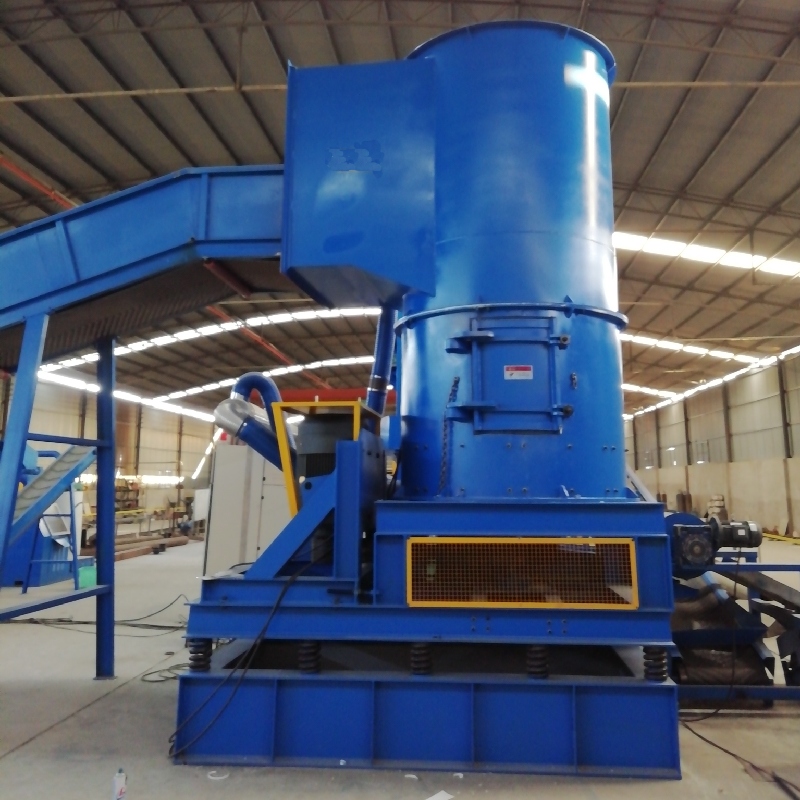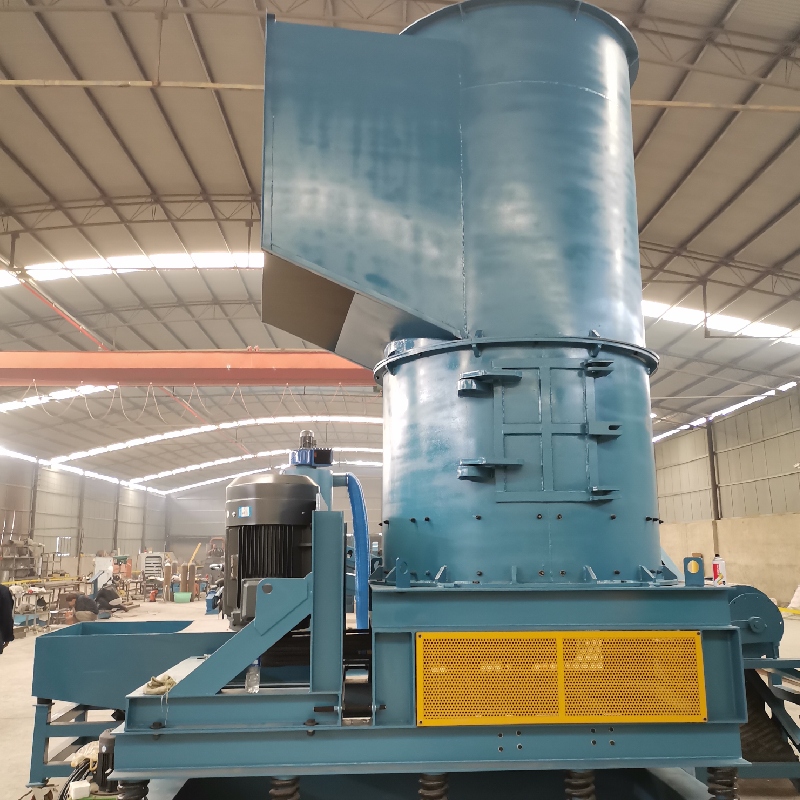

Ago . 15, 2025 03:00 Back to list
In an increasingly digitized world, the generation of electronic waste (e-waste) poses a significant environmental and economic challenge. Globally, e-waste volumes are surging, with projections indicating over 74 million metric tons annually by 2030, according to the Global E-waste Monitor. This exponential growth necessitates robust, efficient, and sustainable solutions for `electronic rubbish collection` and subsequent processing. At the forefront of this effort are advanced e-waste recycling systems, designed to transform discarded electronics into valuable secondary raw materials. A critical component in the initial stages of this comprehensive process is the strategically designed electronic recycling bin, serving as the crucial entry point for responsible disposal, feeding into sophisticated E-waste recycling lines. These integrated systems are vital for mitigating environmental pollution, conserving natural resources, and fostering a circular economy by ensuring that waste is not merely discarded but meticulously repurposed.
The increasing complexity of modern electronic devices, often containing hazardous substances like lead, mercury, and cadmium, underscores the urgency for specialized handling. Beyond environmental protection, effective e-waste management unlocks significant economic value from precious metals such as gold, silver, copper, and palladium, which are far more concentrated in e-waste than in natural ores. This economic incentive, combined with stringent regulatory pressures worldwide, drives the demand for high-performance recycling technologies. Implementing advanced collection and processing infrastructure, starting with accessible and secure `ewaste bin` solutions, becomes paramount for municipalities, corporations, and industrial facilities aiming to comply with environmental mandates and contribute to global sustainability targets.
The effectiveness of an E-waste recycling line hinges on the quality and precision of its individual components, from the initial pre-shredding units to the final separation stages. The manufacturing process of these robust machines involves cutting-edge engineering and material science. Key components, such as shredder blades, granulator knives, and vibratory screens, are meticulously crafted from high-grade, wear-resistant alloys like manganese steel and hardened tool steel, ensuring extended operational lifespan and minimal downtime. Precision manufacturing techniques, including advanced laser cutting and multi-axis CNC machining, are employed to achieve stringent dimensional tolerances for optimal fit and function, critical for efficient material reduction and separation within the system.
Fabrication processes involve automated MIG and TIG welding for superior joint strength and structural integrity, crucial for equipment operating under high stress from diverse e-waste streams. Surface treatments, such as powder coating and hot-dip galvanization, are applied to components exposed to environmental elements or corrosive materials, providing exceptional corrosion resistance and enhancing the longevity of the equipment. Every stage of manufacturing is subjected to rigorous quality control protocols, including non-destructive testing (NDT) like ultrasonic inspection and magnetic particle testing, ensuring compliance with international standards such as ISO 9001 for Quality Management and CE marking for European market conformity. This meticulous attention to detail during production guarantees that our E-waste recycling line, including durable systems for the `electronic rubbish collection` and sorting of materials, delivers unparalleled performance, reliability, and an impressive operational lifespan, often exceeding 15-20 years with proper maintenance. These systems are especially beneficial in industries like urban waste management, IT asset disposition (ITAD), and large-scale electronics manufacturing, offering significant energy savings through optimized motor selection and intelligent control systems.

Our E-waste recycling lines are engineered for optimal performance, offering high throughput and exceptional material separation purity. Understanding the core technical parameters is crucial for assessing efficiency and return on investment. Below is a table outlining typical specifications for our modular e-waste processing systems, designed to handle a diverse range of electronic waste, from consumer electronics to large industrial equipment, after initial collection in a dedicated `ewaste bin`.
| Parameter | Unit | Typical Value Range |
|---|---|---|
| Throughput Capacity | Tons/Hour | 0.5 - 10 |
| Total Installed Power | kW | 50 - 500 |
| Copper Recovery Rate | % | >98% |
| Aluminum Recovery Rate | % | >97% |
| Plastics Purity | % | >95% (mixed) |
| Noise Level (operational) | dB(A) | ~85-95 (with soundproofing) |
| Required Floor Space | Meters² | 50 - 500 (modular) |
These parameters highlight our commitment to high-performance recycling. High recovery rates translate directly into increased profitability from recycled materials, while optimized power consumption ensures cost-effective operations. The modular design allows for scalable solutions, adapting to various operational needs and available space. Low noise levels and advanced safety features also contribute to a better working environment and compliance with occupational health standards, reinforcing the comprehensive design philosophy that extends from the initial `electronic recycling bin` to the final refined material output.
Our E-waste recycling solutions are designed to address the diverse needs of various stakeholders involved in the electronics lifecycle. From facilitating community `electronic rubbish collection` to handling industrial volumes, the systems are adaptable and robust. In urban environments, strategically placed public `electronic recycling bin` units encourage responsible disposal of consumer electronics. These bins are crucial for collecting items such as mobile phones, small appliances, and for addressing common queries like "how do you dispose of old tvs", directing the public to appropriate collection points.
For large corporations and data centers, our solutions provide secure and efficient processing of end-of-life IT equipment, ensuring data destruction compliance and maximum material recovery. This includes servers, laptops, and networking gear, which demand rigorous security protocols alongside effective recycling. Industrial-scale recycling facilities leverage our high-capacity lines to process massive volumes of Waste Electrical and Electronic Equipment (WEEE), transforming mixed e-waste into segregated, high-purity streams of metals, plastics, and other valuable commodities ready for re-entry into manufacturing cycles. Our systems are instrumental in supporting extended producer responsibility (EPR) programs, enabling manufacturers to meet their take-back and recycling obligations by providing a complete, compliant processing pathway from the initial collection via an `electronic recycling bin` to final material valorization.
Our E-waste recycling lines stand out due to several key technical advantages that ensure superior performance, safety, and environmental stewardship. At the heart of our systems is multi-stage shredding technology, utilizing robust primary and secondary shredders to effectively break down diverse e-waste items, ranging from compact consumer devices to larger components collected via an `ewaste bin`. This initial size reduction prepares the material for subsequent, more precise separation.
Sophisticated separation systems are a cornerstone of our technology. These include powerful Eddy Current Separators for highly efficient recovery of non-ferrous metals like aluminum and copper, ensuring purity rates exceeding 98%. Magnetic separators are employed for ferrous metal extraction, while advanced air classification and density separation tables effectively segregate plastics, circuit boards, and other non-metallic fractions. Each stage is optimized to maximize material purity, thereby increasing the market value of the recycled output. Beyond efficiency, safety is paramount. Our systems integrate comprehensive safety features, including emergency stop systems, interlocked access panels, and advanced dust collection systems that meet strict air quality regulations, ensuring a secure and healthy operational environment. The modular design of our lines allows for flexible configuration, easy installation, streamlined maintenance, and straightforward future expansion, making them adaptable to evolving e-waste streams and regulatory landscapes.

Selecting the right manufacturer for an E-waste recycling line is a critical decision that impacts operational efficiency, compliance, and long-term profitability. Beyond the technical specifications of the recycling machinery, evaluating a supplier based on experience, research and development capabilities, and robust after-sales support is essential. Our company distinguishes itself through decades of specialized expertise in waste management solutions, continuous innovation, and a global network of support.
| Criteria | Our Company | Competitor A (Typical) | Competitor B (Typical) |
|---|---|---|---|
| Customization Flexibility | High (Modular, Tailored) | Moderate (Standard Modules) | Limited (Fixed Systems) |
| R&D Investment | Significant & Ongoing | Moderate | Low |
| After-Sales Support | Global 24/7, Full Service | Regional, Standard Hours | Basic, Parts Only |
| Certification & Compliance | ISO, CE, RoHS, Local Regs | CE Only (often) | Varies, Often Minimal |
We excel in providing highly customized solutions, recognizing that each client's e-waste stream and operational environment are unique. Whether it's designing a compact system for a corporate `electronic recycling bin` program or a multi-ton per hour line for a national recycling facility, our engineering team collaborates closely with clients to tailor solutions that maximize efficiency, minimize costs, and meet specific recovery targets. Our commitment to bespoke system design ensures that the investment in an E-waste recycling line yields optimal results, from initial `electronic rubbish collection` to purified secondary resources.
Our position as a leading provider of e-waste recycling solutions is underpinned by stringent adherence to international certifications and robust industry partnerships. We are ISO 9001:2015 certified for Quality Management Systems, ensuring consistent product quality and service delivery. Our E-waste recycling lines also carry the CE mark, confirming compliance with European health, safety, and environmental protection standards. We regularly collaborate with leading research institutions and industry associations, contributing to advancements in circular economy practices and sustainable materials recovery. Our extensive portfolio includes successful deployments for major municipal waste management entities and large-scale electronics manufacturers globally, demonstrating our proven capability to deliver high-performance, compliant solutions. An example is a recent deployment in a major European capital, where our integrated line, including the intelligent `electronic recycling bin` network, achieved a 98.5% recovery rate for non-ferrous metals from mixed WEEE.
We prioritize building lasting relationships with our clients through transparency, comprehensive support, and clear commitments.
Our streamlined logistics ensure timely global delivery. Following the lead time, shipping and on-site installation by our certified technicians typically take an additional 4-8 weeks, depending on the project's scale and location. Each E-waste recycling line comes with a comprehensive 1-year warranty covering parts and labor, reflecting our confidence in the durability and quality of our machinery. Extended warranty options and long-term service agreements are also available to provide complete peace of mind and maximize your system's uptime. Our commitment extends throughout the lifecycle of your system, ensuring your `electronic rubbish collection` and processing operations remain efficient and productive.
The journey from a discarded electronic device in an `electronic recycling bin` to valuable reusable resources represents a critical step towards a sustainable future. Our E-waste recycling lines embody this transformation, offering technically advanced, highly efficient, and environmentally responsible solutions for complex e-waste streams. By integrating cutting-edge manufacturing, precise engineering, and comprehensive support, we empower businesses and municipalities to not only comply with environmental regulations but also to unlock significant economic value from electronic waste. As the global volume of e-waste continues to rise, investing in robust and adaptable recycling infrastructure is no longer an option but a necessity for environmental stewardship and economic resilience. Partner with us to lead the charge in sustainable e-waste management, turning waste into opportunity.
Latest news
Eddy Separator for Non-Ferrous Metals
NewsAug.22,2025
E Waste Bin for Collected Spray Cans: Sustainable Disposal Solutions
NewsAug.22,2025
Dual Shaft Shredder with Adjustable Blade Gaps
NewsAug.22,2025
Hammer Crusher Machine With Secondary Crushing
NewsAug.22,2025
Copper Granulator Our Promise of Recycling Excellence
NewsAug.22,2025
Industrial Shredders Crafted for E-Waste Recycling
NewsAug.22,2025